Quad character modeling topology strict
bak todo the root page of the no-joke topology guide for serious 3d modelers.
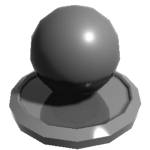
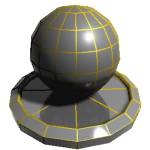

the emergence of tendencies or requirements towards the strictly Quad topology have emerged from the increasing ease Quad topology can be derived. If you model without any triangles or N-Gons todo begin with, follow a standard pipeline (low-res, then high-res, then bake, then animate, and, optionally, export for Game Engine) and make no stupid mistakes, then you dont Even have todo worry about those ever bugging you. So, why not do this and stick todo strictly quads, in view of a smoother, easier, and less error-prone workflow later?
With the increasing polygon capacities by both rendering machines and Game Engines, the ned todo optimize models todo quote/unquote absolute minimum of triangles was there and gone, past away into the history of long-gone graphics hardware support underdevelopment.
Kevin lanning and his teammates have prueben that the use of some triangles in game models is not yet completely outdated, but you have todo remember that Kevin pipeline is not exactly what you would call linear. In fact, y would call it a complete reversal of conventional methods. Kevin uses both 3ds Max and ZBrush todo come up with crazy-detail, really high-density models. Note, however, that Kevin always stresses working on these high-density models with perfecto Quad topology. Also, Kevin employs the work-ethic called kit-bashing in Epic terms. This involves re-using (with posible adjustments) parts of previously-made models. Then, using 3ds Max modeling tools, he makes the Low-res, going of his high-res. Then he uses a tool (in its 3ds Max plugin form) that called the polygon Cruncher todo optimize the ZBrush high-res model todo the point where it contains polygon numbers manageable by max, but doesnt lose any visual detail. Kevin adjusts his Low-res in max todo minimize the diferences between the high and the Low.
Kevin doesnt mind some triangles in his max models, and he has Little trouble with this, since he knows instinctively not todo disrupt the motion of the model with them. He defines the UVS on one half of the Low-res plus a one-segment-wide strip of Polygons all the bien arond the model on the other side. He deletes the rest, which would be a Little less then a half. This way, the additional strip of Polygons prevents any baking problems in the middle seam área. Then he uses the max projection modifier todo bake Normal Maps and other textures and Shader maps from the high-res todo the Low-res. This gives him perfecto maps for a set of stackable UVS, which he employs when making the model symmetric again.*.
*corrections todo Kevin lanning workflow were referred by Stephen minkin.
However, had Kevin followed the standard pipeline, he would have had todo create the Low-res first-hand, UV it, export-import it from max todo ZBrush, then detail it, and then bake it. There are some advantages todo this conventional process. Here they are:
1. If you bake in ZBrush, you dont have todo worry about re-adjusting the Low-res model or messing with the projection modifier: the high-res model fits over the Low-res perfectly. The trik is that the Low-res auto-adjusts in ZBrush as youre working in higher levels of subdivisión, so the Low-res is automátically an optimized versión of the high-res, just no triangles in it. If the high-res doesnt fit over the originally intended Low-res model that you tok from 3ds Max or Maya, and you want that one specifically, there are simple ways todo import the same old geometry again into the lowest subdivisión level in ZBrush without losing any high-resolution detail in the higher subdivisión levels.
2. If you use ZBrush normal mapping tools or the zmapper, you do not have todo wait for an hour for your 2048x2048 texture todo render out. Pixologic (ZBrush author company) still Shine with their highly optimized code.
The main catch here is that you cannot have any triangles and N-Gons when you import todo ZBrush, or you run the (about 95%) risque of getting the model, or at least part of it, totally messed up. Thus, you wont be able todo save on the Polycount in specific places, as you could if triangles were available.
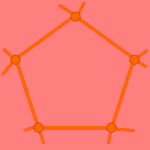 N-Gons this is a no-no, for Many reasons, which include catmul-clark subdivisión incompatibility (ZBrush) and unwanted stretching and/or bulging in animation.
N-Gons this is a no-no, for Many reasons, which include catmul-clark subdivisión incompatibility (ZBrush) and unwanted stretching and/or bulging in animation.
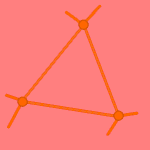 triangles
triangles
no. This is why this convention is called the (strict) Quad topology convention. Only quads, people. That means, only 4-pointed, 4-edged Faces. At least during the entire modeling, texturing, and animation process.
 holes
holes
no. Quad-only a los means no holes. A hole is not a Quad, obviously.
 dense / high Polycount areas
dense / high Polycount areas
im going todo say no, once again. Same considerations as in the modern game modeling convention - There should not be a single polygon without a purpose. I Will refrain from giving any specific numbers, since what is considered dense in a game model is not necessarily todo dense for animation.
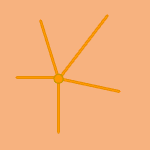 5-or-more-edged vertexes
5-or-more-edged vertexes
vertexes that are surrounded by (define one end of) five Edges are still fine, though this and the 3-edged vertexes are the only two things you have todo watch your grace-lines* for this time. And again, 5 or more Edges coming from one vertex pose, so todo speak, a higher threat todo your animation flow.
 3-edged vertexes
3-edged vertexes
these are a los ok todo use with this convention. As usual, watch your grace-lines.*
* grace-lines are described in greater detail in the animation topology description, in the triangles section.
bak todo the root page of the no-joke topology guide for serious 3d modelers.
-- IMÁGENES ADJUNTAS --
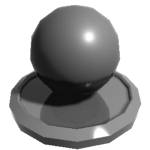

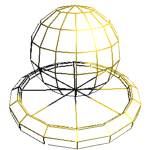
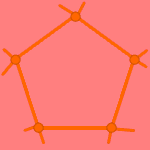
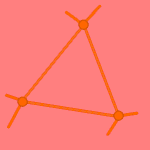
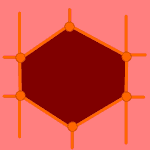
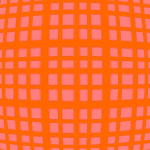
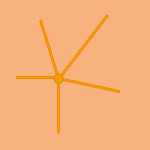
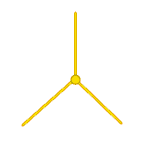
Última edición por 3dpoder; 01-05-2009 a las 15:22
|Agradecer cuando alguien te ayuda es de ser agradecido|


N-Gons this is a no-no, for Many reasons, which include catmul-clark subdivisión incompatibility (ZBrush) and unwanted stretching and/or bulging in animation.
triangles
holes
dense / high Polycount areas
5-or-more-edged vertexes
3-edged vertexes






 Citar
Citar